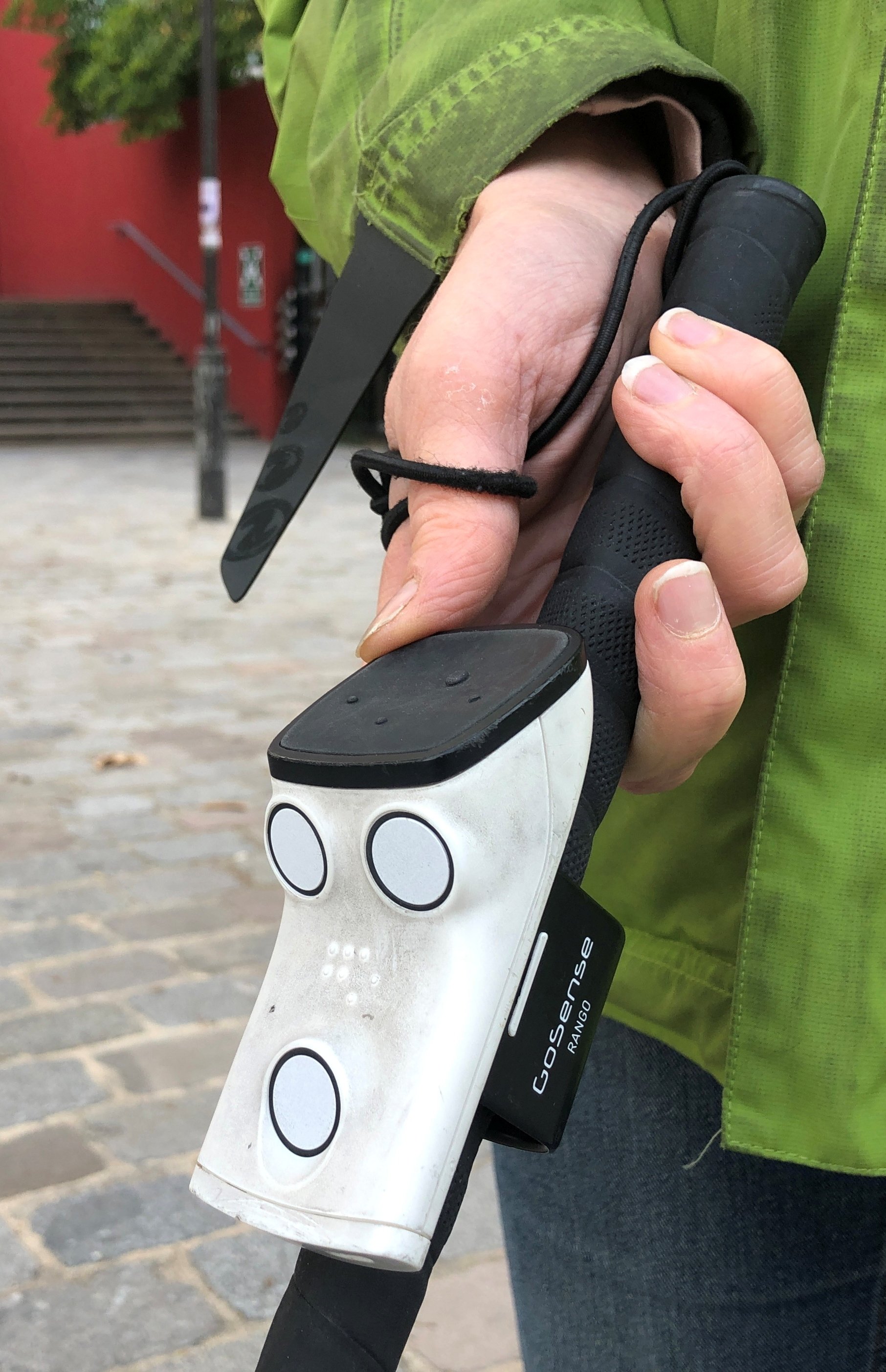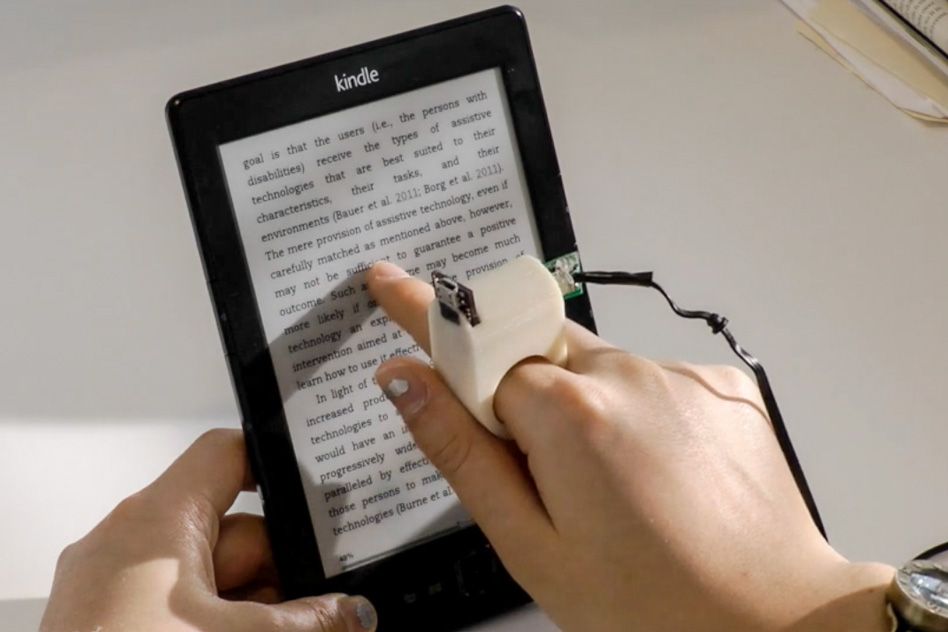Enhancing Lives With Advanced Assistive Gadgets for the Blind
The integration of innovative assistive gadgets for the blind is changing exactly how people experience their surroundings and engage with their neighborhoods. Innovations such as augmented truth clever glasses and innovative electronic traveling aids not only promote navigating but also improve total quality of life. These modern technologies foster a sense of freedom and self-efficacy among individuals, allowing them to take on day-to-day jobs with newly found confidence. However, the ramifications of these advancements extend past mere capability; they test societal perceptions of handicap and freedom. What does this advancement imply for the future of assistive innovation and its function in empowering individuals?
Review of Assistive Instruments
Assistive tools for the blind include a varied variety of tools and innovations made to enhance self-reliance and enhance the quality of life for people with visual problems. These devices deal with numerous demands, from navigation and mobility to communication and day-to-day job monitoring.
Among the main groups of assistive devices includes flexibility aids, such as white walking sticks and overview canines, which aid customers navigate their surroundings safely. Electronic traveling aids, geared up with sensing units and audio feedback, additionally play a considerable function in wheelchair improvement.
In addition, gadgets that assist with everyday living tasks, such as flexible kitchen tools, Braille tags, and speaking watches, empower people to execute jobs individually. Interaction aids, including screen readers and Braille display screens, promote access to info and make it possible for individuals to involve efficiently with the electronic globe.
In addition, low-tech solutions like magnifying glasses and large-print products stay vital for numerous customers. Jointly, these assistive devices offer not just as useful tools however additionally as important enablers of autonomy, fostering better participation in a world that commonly prioritizes sighted experiences. Their integration into life is vital for advertising inclusivity and improving general well-being for those with aesthetic problems.
Cutting-edge Technologies being used
Innovation in technology has dramatically changed the landscape of devices available for people with aesthetic disabilities. Among one of the most notable advancements are smart glasses integrated with increased truth, which provide real-time navigating support and things acknowledgment. These tools take advantage of progressed video cameras and expert system to provide acoustic cues, enhancing the individual's spatial awareness and freedom.
Additionally, mobile applications have emerged as effective resources, making it possible for individuals to determine money, read text aloud, and browse unfamiliar environments through verbal directions. Tools such as Braille screens and refreshable Braille devices proceed to evolve, offering seamless connection with smart devices and computer systems, thus improving communication and access to info.
Wearable technology, consisting of smartwatches equipped with voice-activated functions, better equips individuals by helping with quick accessibility to notices and notifies without calling for aesthetic interaction. Tactile maps and 3D printing are likewise getting traction, providing tangible depictions of areas that help in positioning and wheelchair training.
Jointly, these ingenious innovations not only improve the daily lives of visually impaired individuals yet also foster greater freedom, inclusivity, and involvement with the wider neighborhood, thereby improving assumptions of accessibility. (AI-powered visual aids)
Personal Stories of Empowerment
Empowerment commonly emerges from personal experiences that highlight the transformative effect of modern technology on people with aesthetic impairments. Take, for circumstances, the tale of Sarah, a young artist who regained her interest for painting with making use of a smart walking cane geared up with obstacle discovery. This device not just promoted her flexibility but instilled a newfound confidence, enabling her to navigate public rooms independently and pursue her innovative ventures.

These narratives highlight the profound impacts that progressed assistive tools can carry day-to-day live. By allowing people to get rid of barriers, technology promotes a sense of autonomy and self-respect. Such empowerment tales function as a testimony to the capacity of advancement, showing exactly how the right devices can significantly boost lifestyle and open doors to new possibilities for those with visual disabilities.
Advantages of Advanced Solutions
The assimilation of sophisticated innovation into assistive gadgets considerably transforms day-to-day experiences for those click for more info influenced by vision loss. AI-powered visual aids. Instruments such as smart walking sticks equipped with sensors, navigation apps, and wearable innovation are developed to give real-time feedback, improving spatial awareness and reducing the threats connected with mobility.
Furthermore, progressed assistive modern technologies promote social addition by facilitating interaction and communication. Voice-activated gadgets and applications allow people to accessibility information and involve with their environments individually, breaking barriers that formerly prevented their participation in educational, expert, and social setups.
Additionally, the customization and versatility of these services satisfy the diverse needs of customers, consequently enhancing their total high quality of life. Enhanced functionality, such as item acknowledgment and text-to-speech abilities, encourages individuals with visual impairments to carry out tasks that they may have once discovered testing. Ultimately, progressed assistive innovations not just boost independence and safety however additionally promote self-respect and self-respect, enabling users to lead meeting lives.
Future Patterns in Assistive Tech
As innovation continues to advance, the landscape of assistive devices for the blind is positioned for exceptional developments that will further enhance availability and independence. Arising fads in assistive modern technology indicate a change towards enhanced assimilation of expert system (AI) and artificial intelligence, enabling gadgets to adjust to specific user requires in real-time. These innovations are expected to help with even more intuitive navigating systems that can identify barriers and give audio feedback, considerably boosting outside movement.
Furthermore, the advancement of wearable technology, such as smart glasses outfitted with augmented truth, will certainly enable users to obtain contextual info about visit their surroundings, thereby improving their spatial awareness. In addition, improvements in haptic innovation pledge to develop responsive comments devices, allowing users to view information with touch, enhancing knowing and communication with their setting.
Telecommunication breakthroughs are also leading the way for remote support remedies, where skilled professionals can offer guidance by means of video phone calls, making sure assistance is conveniently accessible. As these trends unravel, the future of assistive devices for the blind will unquestionably cultivate greater freedom, equipping individuals to browse their world with confidence and convenience.

Verdict
The combination of advanced assistive tools for the blind stands for a substantial development in fostering independence and enhancing lifestyle. By making use of ingenious technologies, these devices equip users to navigate their atmospheres with greater confidence and freedom. As the field continues to develop, ongoing research study and advancement will likely produce a lot our website more sophisticated solutions, additionally transforming the lived experiences of individuals with visual impairments and advertising a higher sense of inclusion within culture.
The combination of innovative assistive devices for the blind is transforming just how people experience their surroundings and interact with their communities. The integration of sophisticated innovation into assistive tools substantially changes daily experiences for those impacted by vision loss.As technology continues to develop, the landscape of assistive tools for the blind is positioned for impressive innovations that will additionally enhance ease of access and self-reliance. Arising fads in assistive technology suggest a change toward increased combination of synthetic knowledge (AI) and machine learning, making it possible for devices to adjust to specific user needs in real-time.The combination of innovative assistive gadgets for the blind stands for a considerable innovation in promoting freedom and improving top quality of life.